
18 minute read
The Content Concierge
CONTENT CONCIERGE THE
Ed Wenck
Content Director, CEDIA
The choices are overwhelming: Streams, services, devices — the range of available content is staggering, and the ability of the average consumer to sort it all out is likely past its limits. Geoff Meads (Presto AV) and John Penney (who’s been a strategy officer for some of the biggest names in content delivery) understand the challenges here, and they both see a terrific opportunity.
In a class — well, more of an open discussion — titled “The Future of Entertainment: Content, Distribution, and the Consumer,” presented at ISE 2020, Meads and Penney ticked off the issues for attendees who hailed from around the globe: Michigan, Cyprus, Belgium, and so on.
Moderator Walt Zerbe summed up the issue simply: “I’m a Star Trek fan, and there’s a new Picard series. It’s only on CBS All Access. I don’t have that.” Does he want that service — really? For how long? “Suddenly, my life was a bit more complicated.” A minor inconvenience for a single show, to be sure; but one that’s repeated — even multiplied — seemingly on a daily basis.
“Remember the days when you’d walk into a client’s home and they’d have five, six, seven remotes sitting on the coffee table? One for every device, every cable box?” says Meads. “It feels like we’re back to that place in some way.”
Why So Much?
Compounding that issue, for example, is the fact that TV manufacturers — facing ever narrowing margins — want to build ecosystems that manage your entire experience. The consumer, meanwhile, faced with a dizzying array of options and hardware, has difficulty sorting it all out. The average user likely can’t even differentiate between 1080p and 4K content. “If someone owns a 4K TV,” says Meads, “they think they’re watching nothing but 4K content.”
“If you brought a client on to the floor of a show like ISE, they’d swear we were all speaking Klingon,” he adds.
Penney is quick to note that there’s another wrinkle in all of this: There’s a sameness to the bulk of Big Hollywood productions, and that’s by design. “We see remakes because they’re safe bets. Every few years, the studios can make a new Spiderman movie with better special effects.” The economics here are staggering: It costs Disney $200 million to make, and another $200 million to market a film (and that’s part of the reason that merchandising is key).
“Movie production is an either-or industry when it comes to price,” says Penney, “productions are either extremely costly or very cheap. Lowercost productions don’t need to go into a theater — they can be marketed directly to the consumer.” Couple that with the way people consume content (made possible by all of our dazzling gadgetry), and you’ve created a recipe for the demise of “broadcasting” as we know it. “The idea used to be ‘one speaking to many,’” says Meads, “and now we have many speaking to many.”
A New RMR
The upside for an integrator lies in their knowledge and expertise when it comes to what’s delivered where, and in what format.
“If one thinks about perhaps rearranging their workforce, for example, so that a single employee is expert in this field, think about what a resource that person becomes,” muses Penney.
Penney’s bullish on the idea of the integrator as a “content concierge,” an idea that’s been echoed in CEDIA podcasts by Mike Heiss and Rich Green.
“There are people who are willing to pay top dollar to get the content to the family in as frictionless a manner as possible,” says Green in one such ’cast. “Imagine an RMR proposition that provides a consultant — you — monthly or quarterly, curating the best experience, one that’s tailored to that home.”
And all this content (and its attendant devices) isn’t going away anytime soon. “The future will be the same,” says Penney, “only more so.”




WELLNESS AND TECH In Line with Design




CINZIA MORETTI, MORETTI INTERIOR DESIGN
You’ve likely heard the terms: “wellness,” “biophilia,” maybe “bio-centric design.” While the concepts are seeing more and more practical applications in the commercial and hospitality worlds, residential integrators are starting to catch up. And adopters of this potential moneymaker will likely see allies in the interior design space, especially if an artisan like Cinzia Moretti has it her way.
Moretti — a native of Sicily whose firm, Moretti Interior Design, is now based in London — is a proponent of what she calls “bio-design.” It’s a marriage of interior design and technology that Moretti refers to as a “journey.” “We apply a lot of different elements like color psychology, lighting psychology, biophilic design, natural elements — everything that involves the five senses. It takes our clients on a journey to well-being.”
This focus on “wellness” as a part of design is borne of a fairly startling statistic: a study funded by the EPA in 2001 determined that the modern human spends 90% of his or her time inside (The National Human Activity Pattern Survey [NHAPS]: A Resource for Assessing Exposure to Environmental Pollutants, by Neil E. Klepeis and others, published by the Lawrence Berkeley National Laboratory). That’s an inversion of most of human evolution: Our species has spent hundreds of thousands of years outdoors, and this business of surrounding ourselves with artificial lights and pristine, hard-edged surfaces is a very recent development.
The Virtual Sky
Moretti — who’s become familiar with these solutions through her husband, a residential lighting designer — starts where you’d expect, given her background. When she begins a project, she considers the universal human rhythm of response to light. “In the morning, it is important to wake up with a warmer light,” she notes — the perfect application for automated shading or LED bulbs that can be tuned in sync with the circadian cycle.
In addition to light, we need space around us, Moretti notes. We’re stimulated (in the right way) by the fluttering of leaves and grasses around us and by the sounds of wind and water. There are manufacturers producing virtual skylights that can provide the illusion of an active sky overhead with clouds rolling by, and the concept of a “living wall” — displays that contain actual mosses or other plants in vertical environments with automated irrigation systems — can provide both the green we need visually and help clean the very air we breathe.
Beyond the Visual
For Moretti, interior design goes well beyond the “seen” — she’s enamored with designs that address every aspect of a client’s wellness. “I’m interested in design that goes beyond a pretty look. It's about how well we live and how we use the stuff around us.”
Beyond lighting and visual stimuli, the opportunities here are abundant for an integrator: music, sound, air and water quality control, even aromatherapy. “Suppose a client tells me ‘I used to always get up at a certain time, and my mom used to make a wonderful pastry. I used to wake up with a lovely smell.’ Imagine how the client would feel if we could provide that scent; tap into that childhood memory.
“Everything is connected,” says Moretti. “People say ‘we are what we eat,’ but actually, we are what we see, what we hear, what we touch — absolutely everything — because that's how it is in nature.”
Ultimately, whether it’s the right fabric or the right sound from a speaker, Moretti is an evangelist for a holistic approach in which designers and integrators are working together from day one. Because, as she says, “Design can improve your life. Everything we use, we wear, it's been designed. And if it's been designed properly — thoughtfully — it will improve the way we live.”
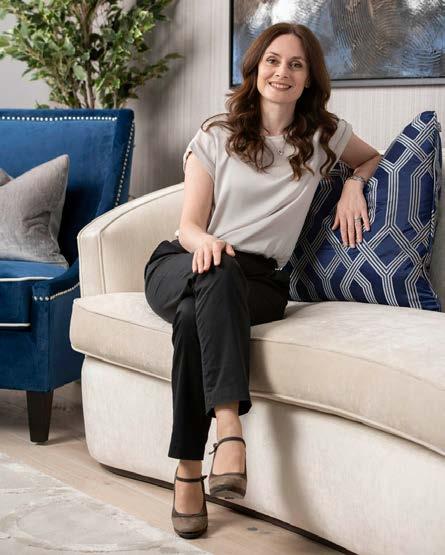
Duncan Wardle’s Done with Rules

The game’s called “Yes, and” — it’s a classic exercise used by comedy improv troupes. One player offers a concept: Our Star Wars party will have Darth Vader conducting an orchestra, for example. The second player’s job is to build on the concept with the simple verbal trigger, “Yes, and,” as in, “Yes, and Darth will conduct with a lightsaber!”
The idea is the polar opposite of another game: “No, because.” One response to the above example might be, “No, because an orchestra is entirely too expensive.”
Both techniques were demonstrated by Duncan Wardle, who provided the opening address at ISE 2020. Wardle, who’d been head of innovation and creativity at Disney for better than two decades, was demonstrating one of the ways a great many businesses unintentionally stifle creativity — and how firms could empower their teams to get back to the sense of childlike curiosity that could trigger true innovation.
Wardle — all the while asking the audience to split into teams of two or three for a series of rapid-fire mental workouts like Ed Wenck Content Director, CEDIA
those mentioned above — notes that kids (especially preschoolers under the age of roughly six) have their own spin on “Yes, and” — they simply ask the question “Why?” over and again. “Kids have really good BS detectors,” says Wardle. “They know when you’re trying to dodge something.”
The Rules of Disneyland
A big part of Wardle’s strategy for success is breaking rules, including the unstated ones.
“The first thing we might think about when reinvigorating a theme park would be to come up with more rides, maybe dump $200 million into creation, testing, infrastructure,” he says. Instead, Wardle and company moved to find out what visitors to the park really wanted, even if they (and he) hadn’t quite verbalized it yet.
“What are the rules of Disneyland?” he asks. “You’ve got to fly somewhere, park, then wait in line …” That last part, of course, is a pain point for a Disney visitor. So, Wardle and his colleagues developed the “Magic Band,” an RFID bracelet that eliminated turnstiles, hotel check
in waits, and so on. The technology mined the most precious resource anyone on vacation might have: time, up to two hours a day.
“We could have raised admission fees,” says Wardle. “We’d have made 3% more the next quarter.” Instead, he improved the experience, which meant return trips and the best possible advertising campaign any company could ask for in a universe bombarded with social media streams: word of mouth.

Diversity is Key Another exercise Wardle led: Draw a house in seven seconds.
Most of the audience scribbled or imagined a peaked roof with a door in the middle of the structure. “That’s a pretty common result — especially when I asked a room full of fiftysomething white guys to do the same thing,” says Warlde. “That’s the definition of ‘groupthink.’” When Wardle asked a Chinese woman who was a dim sum chef to participate, however, he got a different result: a round basket of a home with a fluffy roof that looked like a dumpling.
“A diversity of experience in that room led to that result,” says Wardle, “and as we left the room, someone slapped a Post-It note on the drawing that read ‘authentically Disney and distinctly Chinese’ — that’s become the slogan for the Shanghai Disney resort that opened in 2016.”
“We all say ‘we’ve got to innovate,’ but we’ve got to understand how,” says Wardle. “People need the tools to do it — now.” With A.I. poised to replace some (certainly disruptive) percentage of workers in the near future, and firms like Amazon investigating the distribution of inexpensive 3D printers to reduce shipping on a great many items, a sense of urgency isn’t unwarranted. And as Wardle sees it, the only way to meet those challenges is to make it a habit to tap back into our creative sense of childlike curiosity.
DUNCAN WARDLE

BEATING THE CYBER BAD GUYS

Ed Wenck Content Director, CEDIA
Two new classes on cybersecurity have been rolled out for CEDIA’s Tech Summits
MIKE MANISCALCO
Longtime CEDIA volunteer Mike Maniscalco has been hard at work — this time crafting a pair of parallel classes for the traveling Tech Summit events. The courses, Cybersecurity for Business Managers and Cybersecurity for Technicians, are primarily about identifying and prioritizing the most pressing threats to your clients and your business.
But why two?
“The first is designed to alert managers to the threats that are out there,” says Maniscalco, “so that when a tech reports an issue from a jobsite, the boss will have some foreknowledge of that threat. The latter course is to help the tech in the field get that info back to everyone at their company.”
Key Stats
Nearly everyone in the field understands the challenges here, but to really drive home the point, Maniscalco’s assembled some stats: • One in three U.S. home computers are currently infected with malware, • 65% of Americans who’ve been online have received a scam offer, • 47% of American adults have had personal info exposed by cyber criminals, and, • 600,000 accounts worldwide are hacked every day.
As Maniscalco’s quick to point out, it’s easy to go down the various rabbit holes attendant to these stats: How did we get here? What kind of crazy dystopian world are we creating? But instead of philosophizing about privacy concerns or the future of the hackable universe, Maniscalco’s classes are about identifying problems that exist right now, today, and figuring out a strategy to get ahead of potential issues. In the classes, attendees are asked to rank potential threats on an x/y axis: x expresses risk, low to high, and y expresses likelihood. (By risk, Maniscalco is speaking about the potential mayhem that the breach might cause.)
And the Results?
To plot the threats properly on the matrix, attendees first listed as many issues as they could think of. Working in groups, they noted everything from default passwords being repeated over and over again in various systems to under-educated employees opening malicious email attachments. Having listed the entire range of dangers, the students picked the three worst and then began to prioritize them along the axes. (Spoiler alert: The motive behind most of the threats is that old standby, theft.)
And what surprised Maniscalco about these new courses? “I’m amazed that everyone knows how important this is, and that most firms can identify what their major vulnerabilities — and liabilities — might be when they’re installing these systems. But this is about identifying the common threats you can tackle in the most cost-effective way possible. I get it — people are busy, but you’ve got to budget some time to address this stuff.”
“As the saying goes, there are two types of people,” he jokes. “Those who’ve been hacked — and those who don’t KNOW they’ve been hacked.”
the GRADUATE
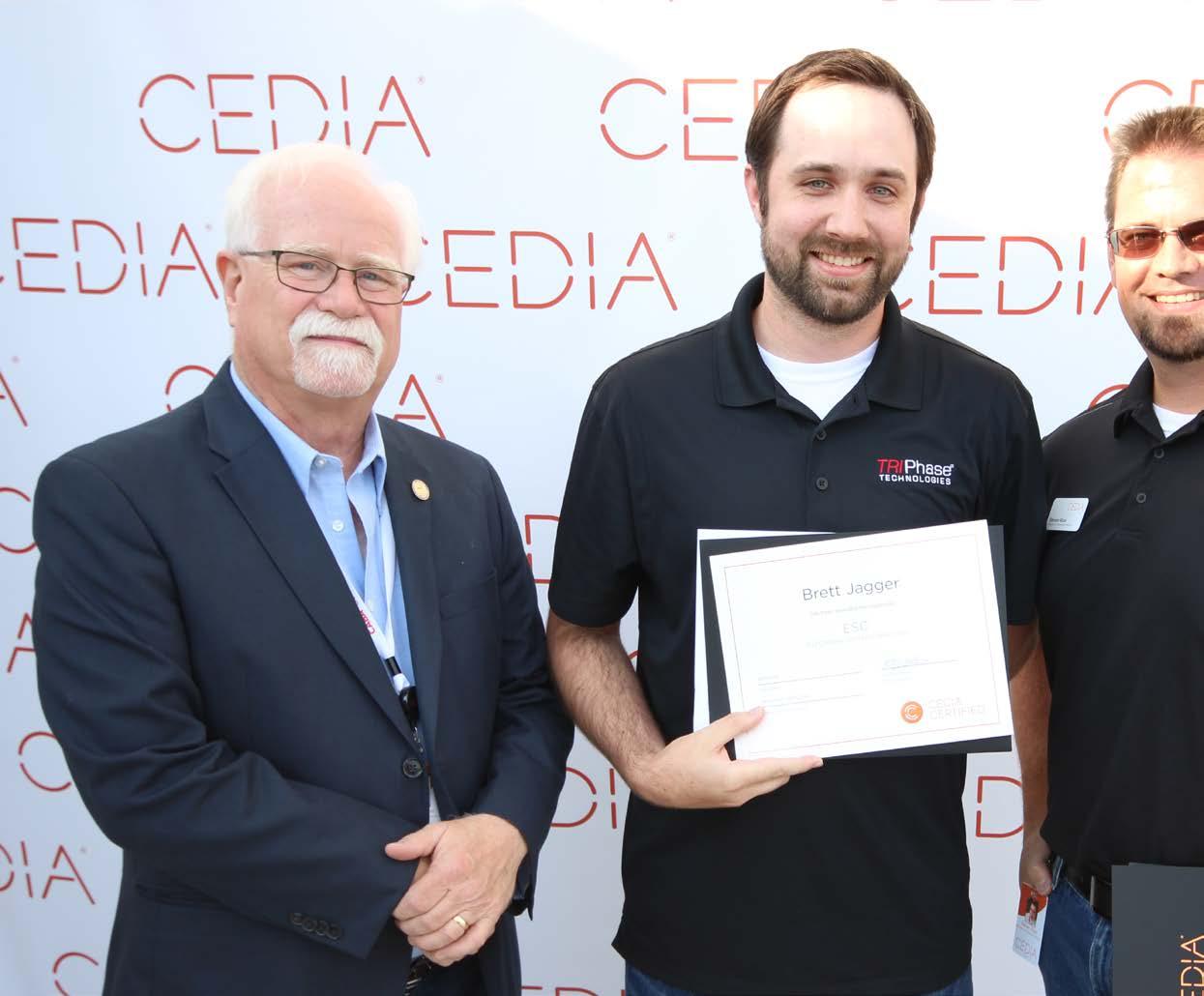
Catching up with one of the many successful students who landed a gig after graduating from the CEDIA Electronic Systems Integration Technician Training program
One of the graduates of the inaugural CEDIA Electronic Systems Integration Technician Training program was a student named Brett Jagger. Jagger, who’d had retail management experience on his resume, found out about the 12- week immersive occupational skills training program from his wife. “She works at a local community college, and she got an email from Tommy Tabor about this integration class.” (Tabor is CEDIA’s director of workforce development.)
“And she said, ‘You have to be a part of this. This is right up your alley.’”
And how did Mrs. Jagger know that this was the ticket for Brett? Simple, he notes: “It's always been a hobby of mine. I've been trying to do home automation on the cheap for years with a Raspberry Pi and piecing together as many different manufacturers as possible, making them work.” An Immediate Hire
That hobby is now a profession. After Jagger’s training at CEDIA HQ in Indianapolis, he’s landed a gig at a prestigious, 50-person firm in Central Indiana called TRIPhase. The firm’s founder, Robert Haecker, was so impressed with Jagger that he was hired by the 24-year-old company a week before Jagger had actually graduated from that CEDIA program.
“We could tell that he'd had management experience before,” says Haecker. “But the real kicker was that he was going through the CEDIA program. Knowing that he had the basics down, combined with his management and experience from the past, he was just a perfect fit for what we needed.”
What they needed, specifically, was a service manager who could oversee a staff of six. According to Haecker, “that entails a number of things, but mainly it is receiving and delivering white glove service to all of our clients.
“With 24 years of customers, we have thousands of clients, and we're dealing with technology and even the best designed technology breaks and has problems from time to time. But he's managing a team, we're executing service, we're keeping our clients up and going. As part of the service department, we do have a preventive maintenance program, which Brett manages. That is our monthly recurring revenue model.”
“When Brett first came in, he obviously spoke well and presented himself well,” Haecker recalls. “We work with very high-end clientele, and I immediately thought, ‘Okay, I want this guy speaking with our clients.’” The New Guy Fits Right In
And for Jagger, his training with CEDIA had prepared him not just for speaking with clients, but communicating immediately and effectively with his new co-workers.
“It was very helpful to be accepted by these folks that have been working with TRIPhase in the service department for 10-plus years that I knew what an GRADUATE
HDMI extender was, that I knew the handshake issues with HDMI and was able to diagnose those with customers and pass that information on,” says Jagger. “Suppose a client calls: She's seeing this issue, and for example, I can diagnose it for our service team. Let’s suppose, say, it's likely an HDMI handshake issue. That gives my team a step ahead when they're on site to diagnose it and fix it so that we're in and out as quickly as possible.”
Of course, that kind of know-how that Jagger gleaned from his CEDIA education not only inspires trust with Jagger’s co-workers, but with the TRIPhase customer base as well. “Brett can look at a broad situation and be calm and diagnose, walk the client off the ledge, de-escalate and let them know we can fix anything,” says Haecker. “And it's just amazing how he can immediately make that client feel that, ‘Okay, I'm talking to the right person, I'm working with the right company. They're here to help.’”
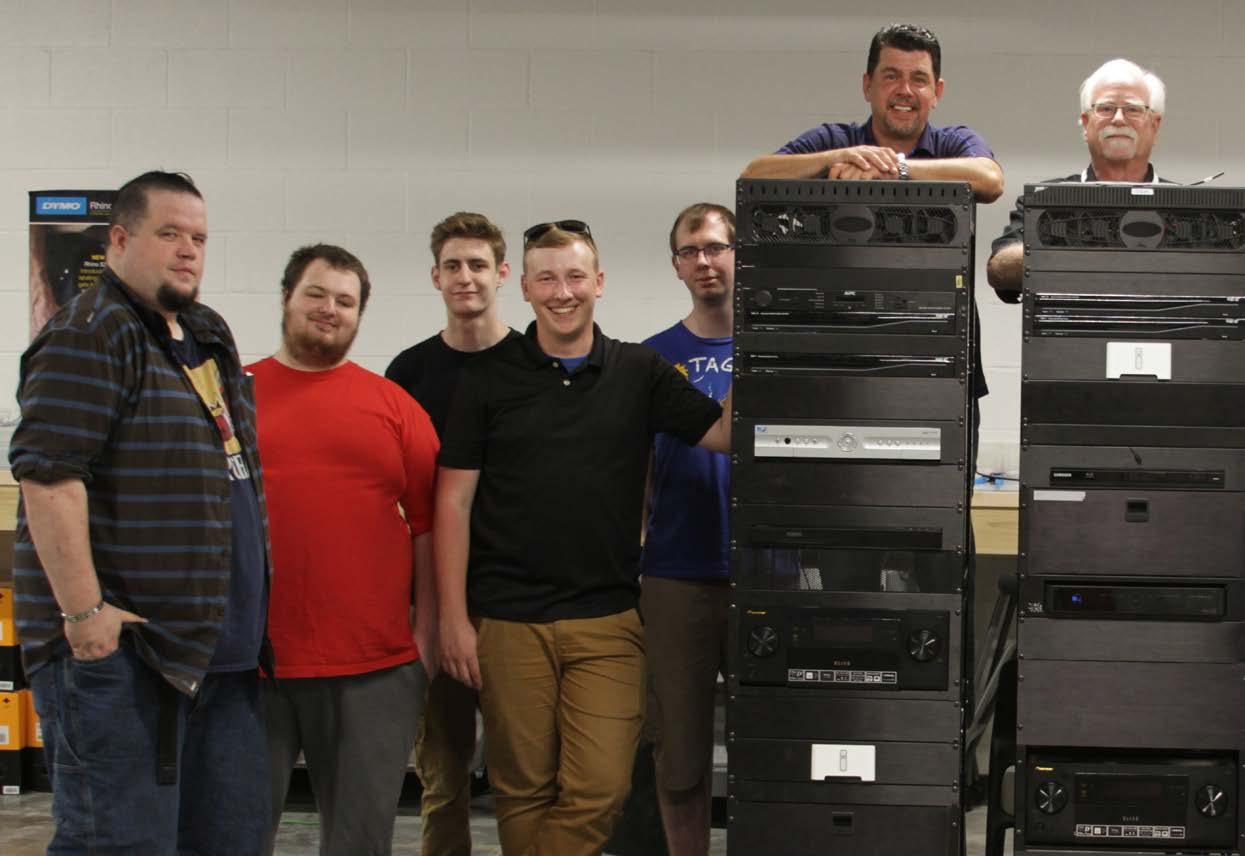
Why It’s Critical
As Robert Haecker notes, “We've always been fortunate in finding talent, but I can tell you industry-wide, it's typically one of the largest struggles.”
Research bears that out: The CEDIA “2019 U.S. Market Size and Scope of the Integrated Residential Technology Industry” study found that the number one challenge faced by CEDIAindustry companies is finding qualified employees. (That response netted a 21% share of the answers.)
The problem isn’t limited to the Americas: CEDIA’s EMEA offices are addressing the same issue, and with the help of a long list of CEDIA volunteers, the U.K.’s Institute For Apprenticeships and Technical Education has developed and approved a brand-new Smart Home Technician apprenticeship standard that is now ready for delivery.
As CEDIA’s EMEA team noted when the apprenticeship standard was announced, “The Smart Home Technician level 3 apprenticeship standard is aimed at those who are keen to install, configure, and maintain a range of electrically connected digital home technologies. Combining a range of topics, this standard allows them to develop a comprehensive knowledge base and skillset, and will help build a skilled workforce for the future. Knowledge areas include, documentation; data and IP networking; automation and control; structured wiring, cables, and connectors for digital infrastructure; and system verification and testing.”
This push to build the workforce is one plank of CEDIA’s strategic plan that’s being implemented worldwide — and business owners like Haecker are grateful for the push: “If CEDIA can build more people like Brett Jagger, it would be a wonderful thing for our industry.”
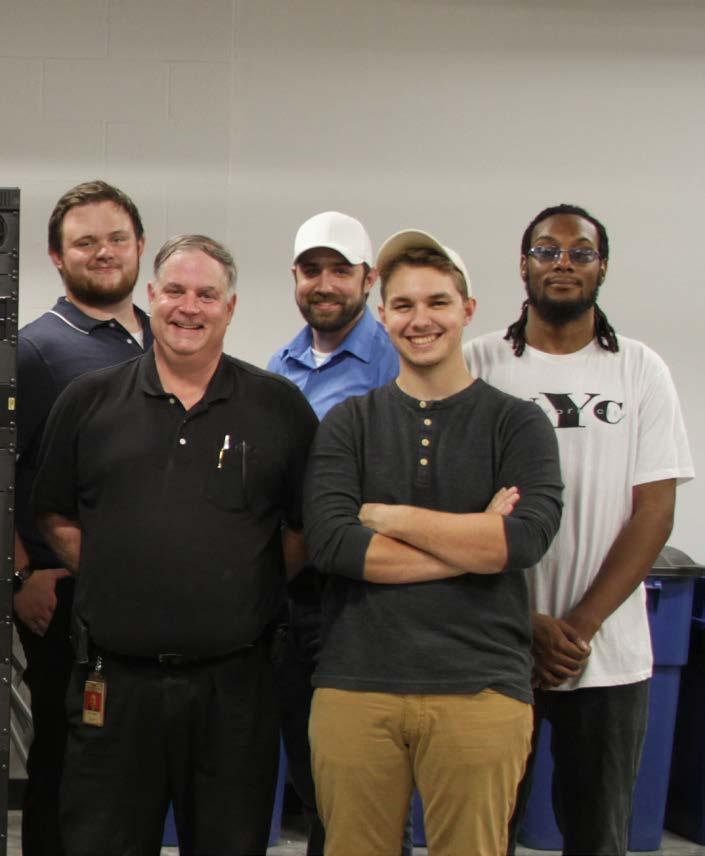
ROBERT HAECKER, TRIPHASE
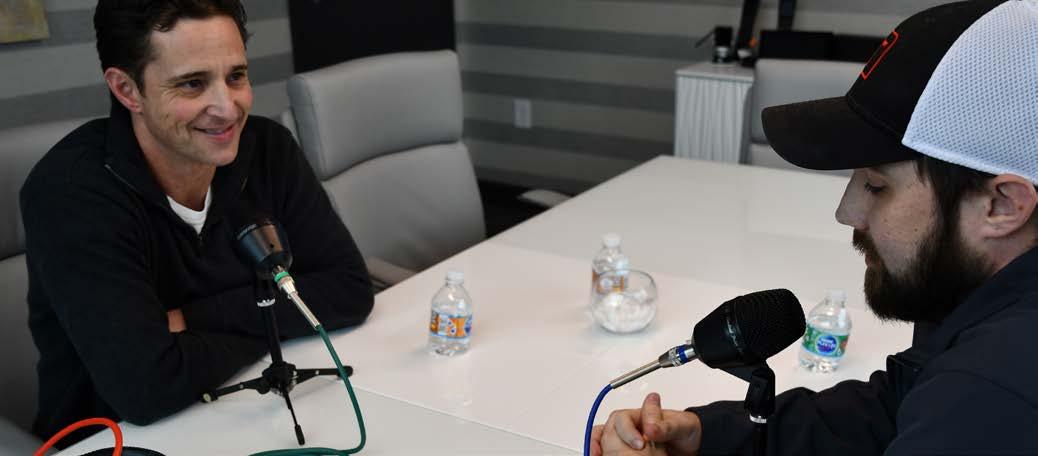
CEDIA is currently working with industry subject matter experts to edit, refine, and package the curriculum into a comprehensive training program package (books, lab manuals, lab specs, instructor guide, and PPTs) for authorized training partners to deliver in local communities across the U.S. and eventually, around the world. CEDIA is anticipating that program materials will be ready for distribution to local training partners by the end of Q3 2020. CEDIA will be working with career and technical education centers, vocational and technical colleges, community colleges, and other pertinent educational institutions to bring CESIT to key local member markets. CEDIA members interested in learning more or who have existing relationships with educational institutions in their communities can contact Tommy Tabor, CEDIA’s director of workforce development, at ttabor@cedia.org for more information and to make sure that their local markets are high on the priority the list for CEDIA outreach.


